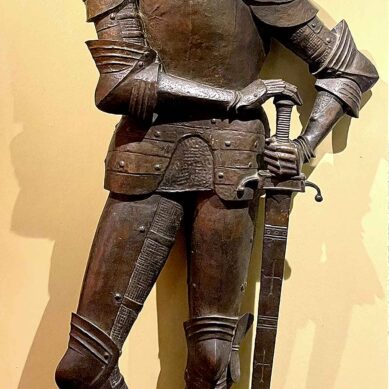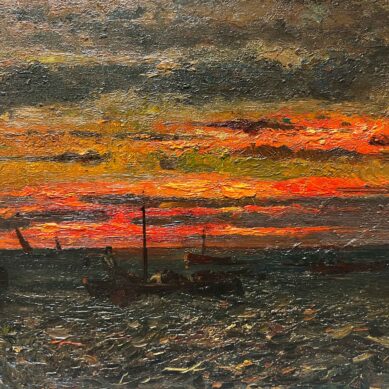You searched
Painter
Marcello Mascherini
Are you interested in the sales or the purchase of his artworks?
We buy works of this artist
and of other painters and sculptors from the 16th century to the first half of the 20th century
The Berardi gallery offers a free and without obligation service for evaluation of ancient and modern art . To find your way in the art market, very complex and full of nuances, it is better to rely on a professional consultant who can answer fast and concretely to your needs. The clarity of the answers will resolve effectively the need to estimate or sell an asset.
Contact us immediately without commitment
Answers also in 24 hours:
Marcello Mascherini
Marcello Mascherini
Marcello Mascherini, born in Udine in 1906, spent most of his childhood with his mother and grandmother, near Pordenone, as he was not recognised by his father, who belonged to a wealthy family of goldsmiths and sculptors. After spending a few years in Trieste, he moved to Isernia, where he had his first encounter with sculpture, working in some local workshops. After graduating from the Regia Scuola d’Arti applicate all’industria, he returned to Trieste in 1920.
Primitivist Sculpture: between archaism and classical memory
He continued to cultivate his sculptural practice, completing an apprenticeship in the studio of Franco Asco (1899-1970), with whom he produced his first works in a collaboration that continued for several years, for example in the execution of the busts of Roman jurists for the Palazzo di Giustizia in Trieste. In 1924, when he was only eighteen, he made his debut at the city’s Circolo Artistico and, noticed by the intellectual Silvio Benco, was encouraged to hold his first one-man show the following year. Among the first known works of the very young Marcello Mascherini are the expressive and evocative plaster masks he made in 1928 for the Politeama Theatre in Trieste, commissioned by the architect Umberto Nordio. The personifications of Tragedy, Comedy, Music, Theatre, Singing and Dance are the sculptor’s first public works. From the 1930s onwards and after meeting Arturo Martini (1889-1947), he began to work on a larger scale, developing the idea of figures with rough skin and faces reminiscent of Etruscan statuary, expressing archaic virtues such as work, motherhood and communion with nature.
In 1931, when he was only 25 years old, he was noticed by the Trieste architect Gustavo Pulitzer Finali, who designed the interior of the motorship Victoria, and who asked him to decorate the first class banquet hall with sculptures of the King and Duce. This moment marked the beginning of his prestigious collaborations with artists and architects such as Libero Andreotti and Gio Ponti and, in fact, opened the way for him to decorate ships and transatlantic liners, which would last until the 1960s. In the same year, he took part in the I Quadriennale in Rome with a bronze Portrait and was involved by various architects in the creation of several works for cruise ships and transatlantic liners.
From 1934 onwards, and for another eleven editions, he was also presented at the Venice Biennale, achieving ever-increasing success through a sculpture initially linked to the modes of Asco and then increasingly oriented towards a tragic and expressive primitivism. Mascherini was awarded prizes and recognitions at the Rome Quadrennial and the Venice Biennial, with suggestive works such as the group of animated and primitivist Small Bronzes exhibited at the 1934 Biennale, or such as Eve and Susanna presented at the 1939 Quadrennial. The sculptor’s success was not only in Italy, but also at the foreign exhibitions organised by the Biennale, for example, in 1936, he received the Diploma of Honour at the Exhibition of Contemporary Italian Art in Budapest.
As the years went by, the threadlike, elongated figures were increasingly replaced by full, rounded volumes that fit into space with greater awareness and dynamism, always of an archaic nature, as can be seen in the female sculptures Venus Marina, Woman at the River, Europa and Nude, all presented at the Quadriennale in Rome in 1943.
The 1950s, 1960s and 1970s were mainly marked by the artistic contributions the sculptor made to the world of theatre and set design. In 1953 he made a fundamental trip to Paris, where he saw the studio of Constantin Brancusi (1876-1957), whose synthetic linearism he absorbed. The post-war period was marked by his abandonment of rounded forms and his move towards an expressive and angular primitivism, in which wide hips and busts and threadlike legs appear in sculptures such as Nereid of 1952, Cantico dei Cantici of 1956 and the dramatic Project for the 1958 Aushwitz Monument for the Risiera di San Sabba.
The production of sculptures and bas-reliefs for ships and transatlantic liners
For this specific production, the artist relies on a style halfway between the re-elaboration of 15th-century sculpture and a very personal language, sometimes filiform and sometimes fuller and more graceful, consisting of a playful and vital line, which flows into an extremely modern expressionism of international prestige. The ancient stylistic features, halfway between the geometric taste of archaic Greek sculpture and the softer taste of classical language, lead to the production of figures with an archaic flavour, reminiscent of votive or apotropaic statuettes. Examples are the sculptures or bas-reliefs made for the ships Calitea, Saturnia, Roma, Italia, often decorated with characters from Homeric poems and Greek mythology in general.
The Saint George, executed for the transatlantic liner of the same name, launched in March 1956 by the San Marco shipyard in Trieste, differs from the previous subjects. The bronze sculpture dedicated to the saint stood against the wall of the ship’s first class atrium, creating a curious contrast with the architectural linearity of the rooms and furnishings, designed by his friend Pulitzer Finali. St. George, with his vertical and sharp lines, perfectly embodies the values of the early Christian martyr, in full respect of the medieval and pro-Renaissance iconography, which sees him wrapped in armour and clutching the sword (or lance) used to slay the dragon. The subtle essentiality of the lines of the armour gives the sculpture an extremely lively taste and at the same time gives it a deliberate rigidity, which is released in a chiastic stance that is anything but classicist, indeed profoundly Gothic.
For the entire length of the body, the rhythm of counterpoint dominates, in which the angles of the armour give movement and make the subject unique. Despite the fact that the saint’s face and almost hieratic posture recall archaic or medieval memories, it is impossible not to recognise points of contact with Donatello’s Saint George in marble for the church of Orsanmichele in Florence in 1416. The static front and the serene gravitas of the smile give physical and moral resolve to the statue, which differs from Donatello’s in the absence of the shield and the decidedly more broken lines. Lastly, we should mention Ulysses and the Sirens, made two years earlier for the ship Homeric, a statue that has the same inventive whimsy as the Saint George and which respects the language adopted by Mascherini during the 1950s: his figures lengthen, become thinner and are filled with a temperament that is sometimes fable-like and sometimes dramatic.
In his later years, Marcello Mascherini’s plasticism returned to that primitive and mythical pulsation, however, imbued with international elements, in which the sculptures found themselves to be almost bronze installations alive and animated by the surrounding space. Active until the end, the sculptor died in Padua in 1983 at the age of seventy-seven.
Elena Lago






